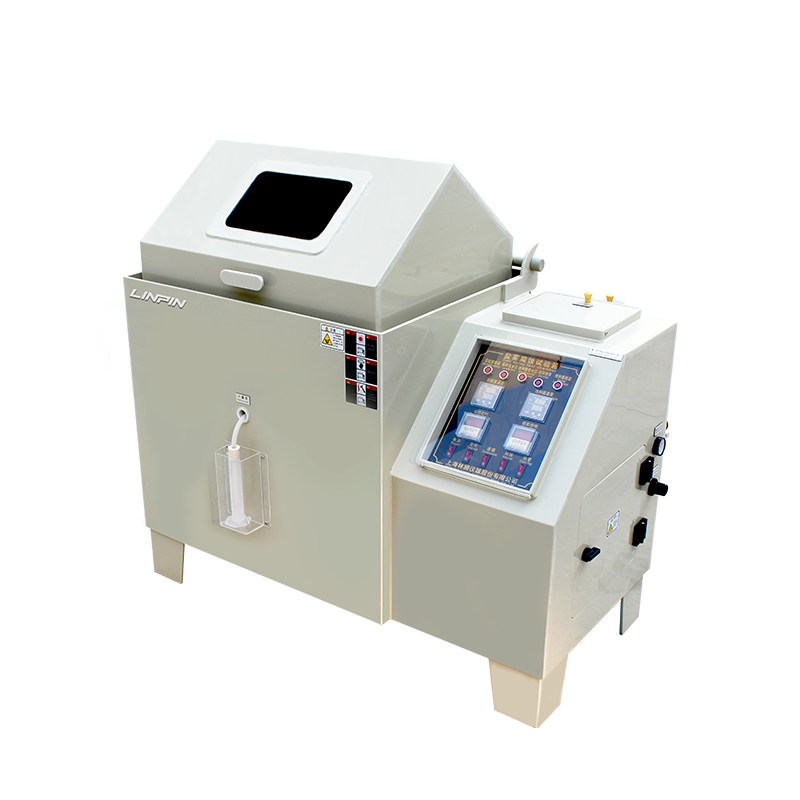

Salt-spray cabinets artificially intensify corrosive agents so that months or even years of marine or industrial atmospheric attack are reproduced within a few hours or days. This paper systematically describes the working mechanism of the equipment, the control logic of its critical parameters, and the quantitative correspondence between test results and natural exposure. The aim is to provide industry with the technical basis for tailoring test programmes to specific products.

Introduction
Metal corrosion imposes enormous maintenance costs and safety risks on the equipment-manufacturing, transportation, energy and chemical industries. Traditional outdoor exposure is time-consuming and yields highly scattered data, making it incompatible with today’s rapid product-development cycles. The salt-spray chamber compresses time by integrating chloride ions, heat, humidity and oxygen concentration in a sealed enclosure, delivering repeatable and quantitative accelerated-corrosion assessment. It has become the primary method specified in ISO 9227, ASTM B117, GB/T 10125 and other international standards.
Natural Atmospheric Corrosion Revisited
Electrolytic thin-film cell: A micrometre-thick water film dissolves O₂, CO₂, SO₂ and NaCl, forming a conductive micro-galvanic cell.
Chloride catalysis: The small, highly polarisable Cl⁻ ion penetrates passive films, forming soluble FeClₙ species that prevent repassivation.
Wet–dry cycling: Salt crystals concentrate during daytime evaporation and re-absorb moisture at night, re-establishing the electrolyte and driving an exponentially increasing corrosion rate.
In nature these processes are modulated by season, wind speed and UV radiation, giving corrosion a strongly non-linear signature.
System Configuration of a Salt-Spray Chamber
Salt-solution supply: De-ionised water and chemically pure NaCl are mixed at 50 ± 5 g L⁻¹, pH 6.5–7.2. For copper-accelerated acetic acid salt spray (CASS), 0.26 g L⁻¹ CuCl₂·2H₂O and glacial acetic acid are added to bring the pH to 3.1–3.3.
Pneumatic atomisation: An oil-free compressor delivers oil-free air at 70–170 kPa. After humidification and pre-heating to 47 ± 1 °C in a saturation tower, the air passes through a Venturi nozzle, creating a vacuum that draws brine and atomises it into 1–5 µm droplets.
Temperature–humidity cell: PID-controlled titanium heaters and ultrasonic humidifiers maintain the test space at 35 ± 1 °C and >95 % RH. A curved, optimised ceiling prevents condensate from dripping onto specimens.
Closed-loop沉降rate control: An 80 cm² funnel collects spray; the standard沉降rate is 1.5 ± 0.5 mL h⁻¹. A laser-scattering sensor feeds back to a servo valve that adjusts nozzle back-pressure or solution flow in real time.
Effluent treatment: A two-stage alkaline scrubber plus a high-efficiency demister ensures that NaCl in the exhaust is <5 mg m⁻³, meeting environmental limits.
Physico-Chemical Coupling During Accelerated Corrosion
Continuous salt-spray stage: Micro-droplets uniformly blanket specimens; Cl⁻ concentration can be several times that of seawater, electrolyte conductivity rises to ~20 mS cm⁻¹ and the cathodic oxygen-reduction current density increases by two orders of magnitude.
Constant humidity stage: Some standards introduce a condensate sub-cycle by dropping the chamber temperature 2–3 °C; water then condenses on cooler specimens, forming a 0.1–1 mm visible film that simulates night-time moisture uptake.
Dry transition stage: A forced exhaust valve reduces RH to <40 % within 30 min; salt crystallises, generating micro-cracks that provide ionic paths for the next spray cycle. The above cycle can be repeated 2–4 times within 24 h, yielding corrosion information equivalent to one week of natural exposure. Quantitative Relation Between Test Parameters and Corrosion Rate According to the Arrhenius model and Faraday’s law, a 10 °C rise roughly doubles the corrosion current; increasing Cl⁻ by one decade lowers the pitting potential by ~150 mV. Empirical correlations show: Neutral salt spray (NSS) 48 h ≈ 1 year in a marine atmosphere; CASS 24 h ≈ 2 years in an industrial-marine atmosphere; Prohesion 6 cycles ≈ 18 months in a temperate rural atmosphere. Producers can therefore select the appropriate standard and define acceptance thresholds based on service environments. Evaluation and Failure Criteria Visual examination: ISO 10289 defines protection (Rp) and appearance (Ra) ratings. Mass-loss method: Specimens are descaled in 50 g L⁻¹ ammonium citrate, ultrasonically cleaned and re-weighed; corrosion rate is reported in µm a⁻¹. Electrochemical verification: Linear polarisation resistance (LPR) or EIS is used; if the polarisation resistance drops by ΔR_p / R_p,0 > 80 %, protection is deemed to have failed.
Maximum pit-depth: Confocal microscopy or white-light interferometry maps pit-depth distribution; the criterion is often that the deepest pit should not exceed 10 % of the substrate thickness.
Equipment Selection and Test Customisation
Substrate-specific issues: Filiform corrosion on aluminium alloys can be assessed by adding 0.01 mol L⁻¹ NaCl + 0.035 mol L⁻¹ Na₂SO₄; for magnesium alloys CO₂ is injected to lower the pH to ~4.0, simulating acid condensate.
Coating systems: An epoxy-zinc-rich primer plus polyurethane topcoat may pass 1 000 h NSS without blistering, but a scribe test is required to evaluate under-cut.
Acceleration ratio: For process-quality monitoring, conventional NSS is sufficient; if the target is a 25-year offshore life, a multi-factor “salt-spray–UV–condensation” cycle with an acceleration factor of 20–30× is recommended to avoid mechanism distortion.
Data traceability: QR-coded specimen racks and automated image acquisition provide time-resolved corrosion maps, satisfying IATF 16949 traceability requirements.
Salt-spray chambers reproduce chloride-induced metal degradation in a controllable and repeatable manner; they are essentially a physico-chemical magnification of the key drivers found in natural atmospheres. A thorough understanding of nozzle atomisation, temperature–humidity coupling and Cl⁻ transport dynamics not only improves test accuracy but also feeds back into material selection, protective-coating design and life prediction. With the advent of IoT sensors and machine-learning algorithms, next-generation intelligent chambers will enable on-line corrosion-rate forecasting and adaptive parameter adjustment, offering even firmer data support for long-life, high-reliability service of premium equipment.